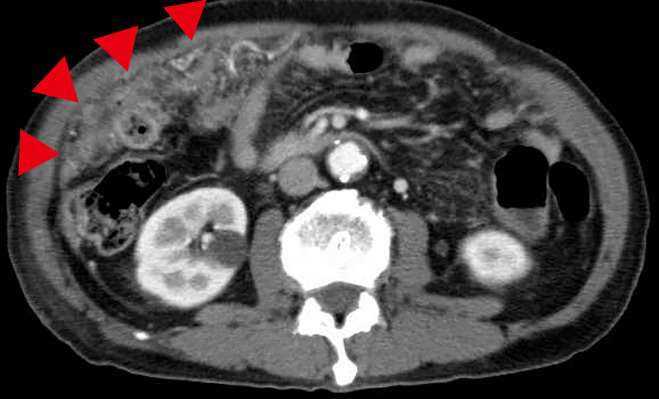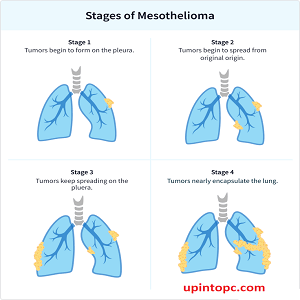Introduction:
Mesothelioma CT is a rare and aggressive form of cancer that affects the lining of the lungs, abdomen, or heart. This disease is primarily caused by exposure to asbestos, a naturally occurring mineral used in various industries for its heat-resistant properties. In this comprehensive guide, we will delve into the details of mesothelioma CT, exploring its symptoms, diagnosis, treatment options, and management strategies. We will provide expert insights, addressing common concerns and frequently asked questions to help you understand and navigate this challenging condition.
Table of Contents:
| Heading | Subheading |
|---|---|
| 1. Understanding Mesothelioma CT | – What is Mesothelioma CT? |
| – How does Mesothelioma CT develop? | |
| – Who is at risk of developing Mesothelioma CT? | |
| 2. Mesothelioma CT Symptoms | – What are the common symptoms of Mesothelioma CT? |
| – How does Mesothelioma CT affect the respiratory system? | |
| 3. Diagnosing Mesothelioma CT | – What diagnostic tests are used to identify Mesothelioma CT? |
| – How does imaging play a role in diagnosing Mesothelioma CT? | |
| 4. Treatment Options for Mesothelioma CT | – Surgery as a Treatment Option for Mesothelioma CT |
| – Chemotherapy for Mesothelioma CT | |
| – Radiation Therapy for Mesothelioma | |
| – Emerging Treatment Approaches for Mesothelioma | |
| 5. Managing Mesothelioma CT | – Palliative Care and Supportive Therapies for Mesothelioma |
| – Lifestyle Modifications and Coping Strategies for Mesothelioma | |
| 6. Frequently Asked Questions (FAQs) | – What is the life expectancy for someone with Mesothelioma? |
| – Can Mesothelioma be cured? | |
| – Are there any alternative treatments for Mesothelioma? | |
| – How long does it take for Mesothelioma to develop after asbestos exposure? | |
| – Is Mesothelioma hereditary? | |
| – Can Mesothelioma be prevented? | |
| 7. Conclusion | – Summary of Mesothelioma |
1. Understanding Mesothelioma CT
What is Mesothelioma CT?
Cancer CT is a type of mesothelioma that primarily affects the chest cavity, specifically the lining around the lungs (pleura). It is an aggressive and life-threatening cancer caused by prolonged exposure to asbestos fibers. The “CT” stands for “chest tumors,” emphasizing its location and the area of the body it affects.
How does Mesothelioma CT develop?
Mesothelioma CT develops when asbestos fibers are inhaled or ingested and become lodged in the chest cavity. Over time, these fibers cause inflammation and scarring, leading to the development of cancerous cells. The latency period for cancer CT can range from 20 to 50 years, making early detection challenging.
Who is at risk of developing Mesothelioma CT?
Individuals who have worked in industries such as construction, shipbuilding, manufacturing, and asbestos mining are at a higher risk of developing cancer CT. Additionally, family members of those exposed to asbestos can also be at risk due to secondary exposure.
2. Mesothelioma CT Symptoms
What are the common symptoms of Mesothelioma CT?
The symptoms of cancer CT can vary depending on the stage of the disease. Common symptoms include persistent cough, shortness of breath, chest pain, fatigue, weight loss, and difficulty swallowing. These symptoms can often be mistaken for other less severe respiratory conditions, leading to delayed diagnosis.
How does Mesothelioma CT affect the respiratory system?
Cancer CT primarily affects the respiratory system by causing inflammation and thickening of the pleural lining. This can lead to difficulty breathing, chest pain, and the accumulation of fluid in the chest cavity, known as pleural effusion. As the disease progresses, it can spread to other nearby organs and tissues.
3. Diagnosing cancer CT
What diagnostic tests are used to identify cancer CT?
To diagnose cancer CT, several tests are employed, including imaging studies such as chest X-rays, computed tomography (CT) scans, and magnetic resonance imaging (MRI) scans. Additionally, a biopsy, where a small tissue sample is taken for analysis, is often necessary to confirm the presence of cancer CT.
How does imaging play a role in diagnosing cancer CT?
Imaging plays a crucial role in diagnosing cancer CT by providing detailed visualizations of the chest cavity. CT scans and MRI scans can help identify tumors, evaluate their size and location, and determine if the cancer has spread to nearby lymph nodes or other organs. These imaging techniques assist healthcare professionals in making an accurate diagnosis.
4. Treatment Options for Cancer CT
Surgery as a Treatment Option for Cancer CT
Surgery is a common treatment option for cancer CT, especially in its early stages. Procedures such as pleurectomy and decortication (P/D) and extrapleural pneumonectomy (EPP) aim to remove cancerous tissue from the chest cavity. Surgery can help relieve symptoms, improve quality of life, and potentially prolong survival.
Chemotherapy for Mesothelioma CT
Chemotherapy involves the use of powerful drugs to kill cancer cells or slow down their growth. It is commonly used as a primary treatment or in combination with surgery or radiation therapy for cancer CT. Chemotherapy can help shrink tumors, control disease progression, and alleviate symptoms.
Radiation Therapy for Cancer CT
Radiation therapy utilizes high-energy X-rays or other forms of radiation to target and destroy cancer cells. It can used alongside surgery or chemotherapy to treat cancer CT. Radiation therapy can help reduce tumor size, relieve pain, and improve overall quality of life.
Emerging Treatment Approaches for Mesothelioma CT
Researchers are continually exploring innovative treatment approaches for cancer CT. These include immunotherapy, which enhances the body’s immune response against cancer cells, and targeted therapies that aim to inhibit specific molecular pathways involved in tumor growth. Clinical trials offer opportunities for patients to access promising experimental treatments.
5. Managing Mesothelioma CT
Palliative Care and Supportive Therapies for Mesothelioma CT
Palliative care plays a crucial role in managing cancer CT by focusing on relieving symptoms, improving quality of life, and providing emotional support. Supportive therapies such as pain management, respiratory therapy, and counseling can help patients cope with the physical and emotional challenges associated with the disease.
Lifestyle Modifications and Coping Strategies for Mesothelioma CT
Adopting a healthy lifestyle can enhance the well-being and overall health for individuals with cancer CT. Regular exercise, a balanced diet, and stress reduction techniques can help improve energy levels, manage treatment side effects, and promote a sense of control. Engaging in support groups and seeking emotional support from loved ones can also contribute to coping with the disease.
6. Frequently Asked Questions (FAQs)
- What is the life expectancy for someone with Mesothelioma CT? The life expectancy for individuals with cancer CT varies depending on various factors, including the stage of the disease, overall health, and treatment response. On average, the prognosis for cancer CT is poor, with a median survival of 8 to 18 months from the time of diagnosis.
- Can cancer CT cure? Currently, there is no known cure for cancer CT. However, advancements in treatment options and ongoing research offer hope for improved outcomes. Early detection, multimodal treatment approaches, and participation in clinical trials are vital for increasing survival rates and enhancing quality of life.
-
Are there any alternative treatments for cancer CT?
- While conventional treatments such as surgery, chemotherapy, and radiation therapy are the primary approaches for managing CT, some individuals explore complementary and alternative therapies. These can include acupuncture, herbal supplements, and mind-body techniques. It is essential to discuss these options with healthcare professionals to ensure they are safe and compatible with standard treatment.
- How long does it take for Mesothelioma to develop after asbestos exposure? The latency period for mesothelioma can range from 20 to 50 years, making it challenging to identify the exact time of asbestos exposure. It is crucial for individuals with a history of asbestos exposure to undergo regular medical check-ups and inform their healthcare providers of their occupational or environmental exposure to ensure timely diagnosis and intervention if needed.
- Is Mesothelioma hereditary? Mesothelioma can cause exposure to asbestos fibers and cannot consider a hereditary condition. However, certain genetic factors may influence an individual’s susceptibility to developing mesothelioma. Genetic counseling can provide valuable insights for individuals with a family history of mesothelioma or other asbestos-related diseases.
- Can Mesothelioma be prevented? Preventing revolves around minimizing exposure to asbestos. Occupational safety measures, such as proper ventilation, personal protective equipment, and asbestos abatement programs, are crucial in industries where asbestos exposure is a risk. Additionally, individuals should avoid disturbing asbestos-containing materials in older buildings and seek professional assistance for their safe removal.
7. Conclusion
In conclusion, CT is a challenging and aggressive form of cancer that primarily affects the chest cavity. Understanding its symptoms, diagnostic procedures, treatment options, and management strategies is essential for patients, caregivers, and healthcare professionals. Early detection, multidisciplinary treatment approaches, and ongoing research offer hope for improved outcomes and enhanced quality of life for individuals with mesothelioma. By raising awareness, supporting research initiatives, and providing comprehensive care, we can strive to make a positive impact in the lives of those affected by this devastating disease.




